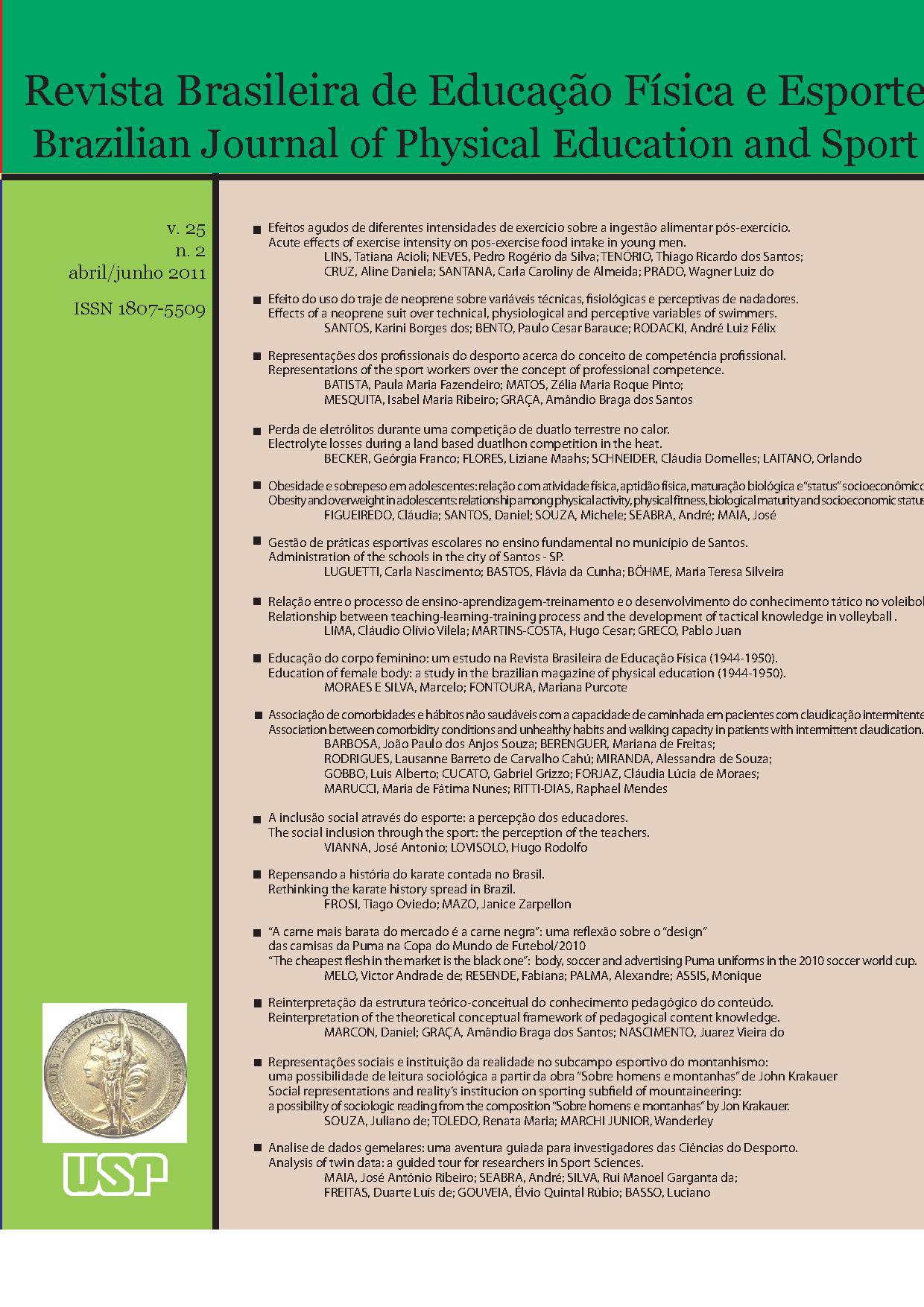Obesity and overweight in adolescents: relationship among physical activity, physical fitness, biological maturity and socioeconomic status
DOI:
https://doi.org/10.1590/S1807-55092011000200005Keywords:
Obesity, Overweight, Adolescence, PortugalAbstract
The aim of this study was to relate physical activity, physical fitness, maturation and socioeconomic status with the prevalence of ponderal risk in adolescents. This was a transversal study made in the Council of Santo Tirso in the north of Portugal. The sample consisted of 961students (463 boys and 498 girls), aged 11 to 18. Body mass index was used to establish ponderal status based on the cut points from COLE et al. Physical activity was evaluated by Baecke's questionnaire and physical fitness with four tests from Fitnessgram battery. Socioeconomic status was ranked according to the grades assigned by state school subsidies, while biological maturation estimation was based on maturational offset. Software programs Pepi version 4.0 and SPSS 18.0 were used for statistical analysis. The level of significance was kept in 5%. Six percent of the target students were obese and 19.5% had overweight. The prevalences of overweight and obesity were similar between genders. The medium levels of physical activity were low or moderate, independent of gender or ponderal status. Boys were more active than girls (p < 0.001) but no significant differences were found between the students with obesity and overweight and normoponderal ones. On what concerns physical fitness, a high percentage of students (above 50%) were considered inapt and failed the tests. Students suffering from overweight and obesity were clearly more inapt. Students with more advanced maturational offset as well as the youngest ones were more likely to present overweight and obesity but no meaningful relationship was found between socioeconomic position and ponderal status. We concluded that young students from S. Tirso had high prevalences of obesity and overweight, were relatively inactive and largely physically unfit.Downloads
Download data is not yet available.
Downloads
Published
2011-06-01
Issue
Section
naodefinida
License
Todo o conteúdo da revista, exceto onde está identificado, está licenciado sob uma Licença Creative Commons (CC-BY)
How to Cite
Figueiredo, C., Santos, D., Souza, M., Seabra, A., & Maia, J. (2011). Obesity and overweight in adolescents: relationship among physical activity, physical fitness, biological maturity and socioeconomic status . Brazilian Journal of Physical Education and Sport, 25(2), 225-235. https://doi.org/10.1590/S1807-55092011000200005


